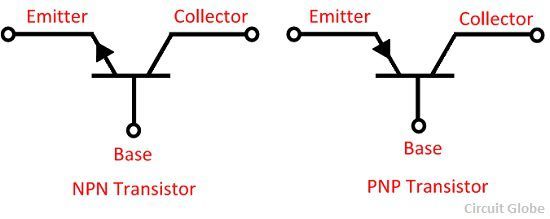Power semiconductors are key components of power electronics technology, used primarily as switches or rectifiers in circuits and systems. Nowadays power semiconductors are widely used almost in every industry of human activity. Our home appliances include power semiconductors, electric cars include power semiconductors, and airplanes and space ships include power semiconductors.
Indeed, power semiconductor devices are used almost everywhere even if we do not think this might be possible. In the past, they allowed to accelerate many industries, and they are the basis for the future. With electric vehicles boom, green energy initiatives, 5G, and datacenters spreading all over the world, we can be sure that power semiconductors will continue to grow, develop and push everything around us to the next levels.
There are many types of power semiconductors and even more applications where we can use them. Basically, all power semiconductor devices can be divided into three groups – diodes, thyristors, and transistors. Moreover, we can split them into additional three groups based on the material used to produce them – silicon (Si), silicon carbide (SiC), and gallium nitride (GaN).
As you can see from the image above power semiconductor devices produced with silicon are many more at the moment due to various factors. First, silicon is much older than SiC and GaN, so it’s been used in production for many decades. That is why Si is more available on the market, and more importantly, it is much cheaper compared to silicon carbide and gallium nitride.
Silicon
So what is silicon? Silicon is a chemical element with the symbol Si and atomic number 14. It is a hard, brittle crystalline solid with a blue-grey metallic lustre, and is a tetravalent metalloid and semiconductor. Because of its high chemical affinity for oxygen, it was not until 1823 that Jöns Jakob Berzelius was first able to prepare it and characterize it in pure form. Its oxides form a family of anions known as silicates.
Silicon is the eighth most common element in the universe by mass. It very rarely occurs as the pure element in the Earth’s crust. It is most widely distributed in space in cosmic dust, etc. as various forms of silicon dioxide (silica) or silicates. More than 90% of the Earth’s crust is composed of silicate minerals. That is why silicon is the second most abundant element in the Earth’s crust (about 28% by mass), after oxygen. Silicon is a natural element, and when not previously present has a residence time of about 400 years in the world’s oceans.
Most silicon is used commercially without being separated, and often with little processing of the natural minerals. Such use includes industrial construction with clays, silica sand, and stone. Silicon compounds such as silicon carbide are used as abrasives and components of high-strength ceramics. Silicon is the basis of the widely used synthetic polymers called silicones.
The late 20th century to early 21st century has been described as the Silicon Age. It is also known as the Digital Age or Information Age due to elemental silicon having a large impact on the modern world economy. The relatively small portion of very highly purified elemental silicon used in semiconductor electronics (< 10%) is essential to the metal–oxide–semiconductor (MOS) transistors and integrated circuit chips used in most modern technology (such as computers and cell phones, for example).
The most widely used silicon device is the MOSFET (metal-oxide-semiconductor field-effect transistor), which has been manufactured in larger numbers than any other device in history. Free silicon is also used in the steel refining, aluminum-casting, and fine chemical industries (often to make fumed silica).
Silicon Power Semiconductors
There are various silicon power semiconductors, and even more variations of them. Traditionally diodes, thyristors, and transistors are the most common silicon power semiconductor devices.
Power Semiconductor Diodes
A diode is a two-terminal electronic component that conducts current primarily in one direction. It has low resistance in one direction, and high resistance in the other. The most common function of a diode is to allow an electric current to pass in one while blocking it in the opposite direction. This unidirectional behavior is called rectification and is used to convert alternating current to direct current.
Diodes are used in power electronics applications like rectifier circuits, switching inverter, and converter circuits. Semiconductor diodes are the most common type of diode. These diodes begin conducting electricity only if a certain threshold voltage is present in the forward direction (i.e. the “low resistance” direction). The diode is said to be “forward biased” when conducting current in this direction. When connected within a circuit in the reverse direction (i.e. the “high resistance” direction), the diode is said to be “reverse biased”.
Power Semiconductor Thyristors
A thyristor is a solid-state semiconductor device with four layers of alternating P- and N-type materials. It acts exclusively as a bistable switch. It conducts when the gate receives a current trigger and continues to conduct until the voltage across the device is reversed biased, or until the voltage is removed. Some sources define silicon-controlled rectifier (SCR) and thyristor as synonymous.
In its most basic form, a thyristor has three terminals: anode (positive terminal), cathode (negative terminal), and gate (control terminal). The gate controls the flow of current between the anode and cathode. The primary function of a thyristor is to control electric power and current by acting as a switch. For such a small and lightweight component, it offers adequate protection to circuits with large voltages and currents. It is attractive as a rectifier because it can switch rapidly from a state of conducting current to a state of non-conduction.
Power Semiconductor Transistors
A transistor is a semiconductor device used to amplify or switch electronic signals and electrical power. It is composed of semiconductor material usually with at least three terminals for connection to an external circuit. A voltage or current applied to one pair of the transistor’s terminals controls the current through another pair of terminals. Because the output power can be higher than the input power, a transistor can amplify a signal. Today, some transistors are packaged individually, but many more are found embedded in integrated circuits.
Transistors revolutionized the field of electronics. They paved the way for smaller and cheaper radios, calculators, and computers, among other things. Most transistors are made from very pure silicon. A transistor may have only one kind of charge carrier, in a field-effect transistor, or may have two kinds of charge carriers in bipolar junction transistor devices.
There are two types of transistors, namely NPN transistors and PNP transistors. The transistor which has two blocks of n-type semiconductor material and one block of P-type semiconductor material is known as an NPN transistor. Similarly, if the material has one layer of N-type material and two layers of P-type material then it is called a PNP transistor.
The transistor has three terminals namely, emitter, collector, and base.
The emitter is the section that supplies the large section of the majority charge carrier is called the emitter. The emitter is always connected in forward biased to the base so that it supplies the majority charge carrier to the base. The emitter-base junction injects a large amount of majority charge carrier into the base because it is heavily doped and moderate in size.
The collector is the section which collects the major portion of the majority charge carrier supplied by the emitter is called a collector. The collector-base junction is always in reverse bias. Its main function is to remove the majority of charges from its junction with the base. The collector section of the transistor is moderately doped, but larger in size so that it can collect most of the charge carrier supplied by the emitter.
The base is the middle section of the transistor is known as the base. The base forms two circuits, the input circuit with the emitter and the output circuit with the collector. The emitter-base circuit is forward biased and offers low resistance to the circuit. The collector-base junction is in reverse bias and offers higher resistance to the circuit. The base of the transistor is lightly doped and very thin due to which it offers the majority charge carrier to the base.
Silicon Carbide
Nowadays to produce faster, lighter, more compact wide bandgap power semiconductors new materials like silicon carbide and gallium nitride are used. Silicon still has the bigger part of the market. However SiC and GaN grow faster, so this is just a matter of time, when WBG power semiconductors will be as popular and widely used as silicon.
Silicon carbide (SiC), also known as carborundum, is a semiconductor containing silicon and carbon. It occurs in nature as the extremely rare mineral moissanite. Synthetic SiC powder has been mass-produced since 1893 for use as an abrasive. Grains of silicon carbide can be bonded together by sintering to form very hard ceramics. Hard ceramics are widely used in applications requiring high endurance, such as car brakes, car clutches, and ceramic plates in bulletproof vests. SiC is used in semiconductor electronics devices that operate at high temperatures or high voltages, or both.
SiC is a compound semiconductor composed of silicon and carbide. It provides several advantages over silicon, including 10x the breakdown electric field strength, 3x the bandgap, and enabling a wider range of p- and n-type control required for device construction. The result is breakthrough performance, not possible with silicon, making it the most viable successor for next-generation power devices. A variety of polytypes (polymorphs) of SiC exists, each with different physical properties. Of these polytypes, 4H-SiC is the most ideal for power devices.
Similar to silicon power semiconductors, silicon carbide devices include diodes, thyristors, and transistors of various types.
Gallium Nitride
Gallium Nitride is a binary III/V direct bandgap semiconductor. It is well-suited for high-power transistors capable of operating at high temperatures. Since the 1990s, it has been used commonly in light-emitting diodes (LED). Gallium nitride gives off a blue light used for disc-reading in Blu-ray. Additionally, gallium nitride is used in semiconductor power devices, RF components, lasers, and photonics.
Gallium nitride (GaN) is a very hard, mechanically stable wide bandgap semiconductor. With higher breakdown strength, faster-switching speed, higher thermal conductivity, and lower on-resistance, power devices based on GaN significantly outperform silicon-based devices. Gallium nitride crystals can be grown on a variety of substrates, including sapphire, silicon carbide (SiC), and silicon (Si). By growing a GaN epilayer on top of silicon, the existing silicon manufacturing infrastructure can be used eliminating the need for costly specialized production sites and leveraging readily available large-diameter silicon wafers at low cost.
GaN is used in the production of semiconductor power devices as well as RF components and light-emitting diodes (LEDs). GaN has demonstrated the capability to be the displacement technology for silicon semiconductors in power conversion, RF, and analog applications.
Unlike silicon and silicon carbide power semiconductors, gallium nitride includes diodes and transistors.
Stay tuned for more power semiconductors and electronics updates. Go to Marketing in Power Electronics section of the website to learn more about the industry.






